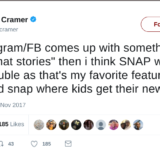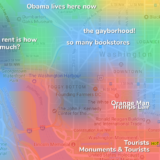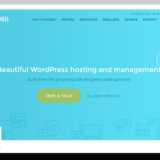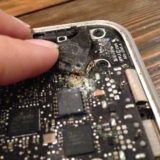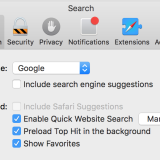Meet The Google Lab That Is Changing Mobile
Right now, we live in two worlds. We have our digital world, with photos, messages, and news, and our physical world, with things like food, cars, and exercise equipment, and washing machines.
The past decade has been about expanding our digital world, and making it more capable. The next decade will be about combining our digital and physical worlds. We’ve seen this shift in the smart home movement, 3D printers, and self-driving cars, but now, Google is taking a new approach to combining our worlds.
This approach is called Project Tango, and it’s being run by a lab of Google engineers known as ATAP (the Advanced Technology and Projects group), partnering with research institutions and developers around the globe.
Google has worked for years to develop technology to digitize the world around us, and map it out digitally in three dimensions. We’re not talking Google Maps. We’re talking about mapping rooms, corridors, and closets of every building in the world, from a school in Nigeria, to NSA headquarters.
Google has also worked on building systems to identify automatically what’s in those 3D images. Now Google is working on building the technology into something that can fit into a smartphone and tablet, without adding too much additional weight.
Rather than develop the software themselves, Google has designed the basic technology, and a few prototypes, and is opening the project up to developers, to see what’s possible.
*See Google’s other ambitious project – Project Loon*
At this stage in the process, Google is starting to unveil Tango products for developers, so that developers can start building for the platform. They unveiled a smartphone a few months ago, and a tablet just this week. It’s pretty amazing what these could one day be used for.
Open for business (or social action)
Google is building Tango openly, which means that developers will be able to build their own apps for the technology, which leaves quite a few possibilities.
The most entertaining use for the device dreamed up so far is 3D-gaming. You could build a 3D game around a room in your house. Designers could digitize a room, and try different furniture and styles digitally. Real estate agents could digitize products for sale, which could be virtually “walked through” using virtual reality goggles like those produced by Facebook’s Oculus VR.
There are also great accessibility possibilities. Apps could be designed to aid the blind, or to assist the otherwise-impaired.
Security Threat
This technology does have some issues though. Imagine a device that can make 250,000 measurements of the world around you, in one second. To people who are already fearful of the amount of data being collected by companies like Facebook, Google, and Apple, this is an absolute nightmare. Imagine a forthcoming google smartphone that could map out your house, without you knowing it!
It also poses a security threat. Despite tightly built security on many laptop webcams, hackers still manage to hack into them frequently. In one notable case, Ms. Teen USA’s webcam was hacked into by a classmate, who extorted her for sex, and other things.
Imagine if a thief gained access to a full map of your house, in three dimensions. He could plan a heist before he ever entered your home! Maybe it’s a good thing that the US still operates on 40 year old nuclear technology.
So…
So, the Tango technology is promising, but it has a mountain of hurdles to overcome before it goes mainstream. How far, and how quickly people will allow Google, or any major corporation to invade the sanctity of their home, is a question left to be answered.



